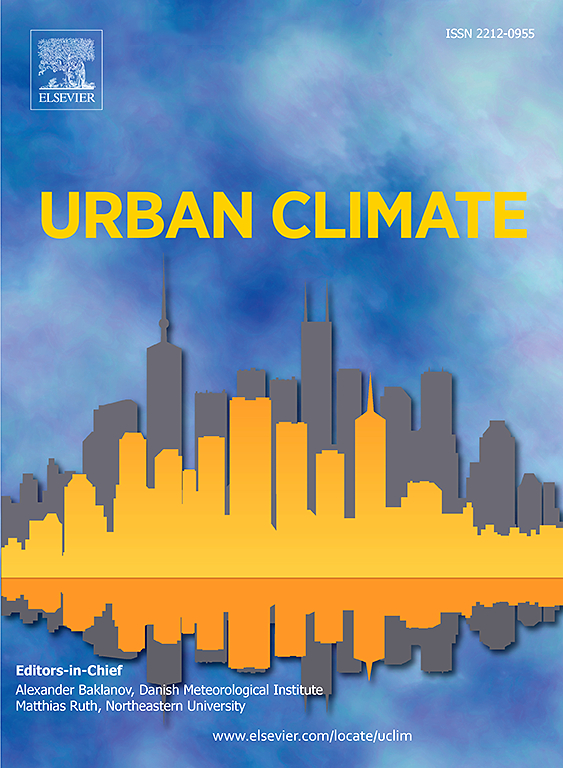Spatiotemporal change of PM2.5 concentration in Beijing-Tianjin-Hebei and its prediction based on machine learning
IF 6
2区 工程技术
Q1 ENVIRONMENTAL SCIENCES
引用次数: 0
Abstract
For decades, PM2.5 (a type of fine particulate matter) in large urban areas has had a profound negative impact on human health. In this study, spatiotemporal analysis and four machine learning methods (XGBoost, ANN, CNN and MLR) were used to assess the changes and drivers of PM2.5 concentrations in the Beijing-Tianjin-Hebei (BTH) from 2016 to 2019 based on 68 stations. The results indicated a significant decrease in PM2.5 concentrations in BTH region (average decrease of 7.69 μg/m3/yr), especially in the southwest region where pollution is the most serious, and the overall annual average still exceeded the national standard. In spatiotemporal modeling, XGBoost effectively captured the spatial characteristics of PM2.5 pollution and achieved the most robust prediction in general (RMSE = 22.11 μg/m3, MAE = 15.18 μg/m3, R2 = 0.64). The SHapley Additive exPlanations (SHAP)-based global and local driving analyses revealed that CO had the greatest relative impact on PM2.5 (52.46 %), while NO2 and SO2 were also important driving factors, with variable importance values of 10.68 % and 6.01 %, respectively. Moreover, temperature and surface humidity are key meteorological drivers of the formation and development of PM2.5 pollution. It is also worth noting that topography is an important geographic background for the formation of haze in the BTH region, which may induces air pollution under unfavorable meteorological conditions and hindering the improvement of air quality under favorable meteorological conditions. The results of this study deepen our understanding of air pollution and its driving factors in important urban agglomerations in China.
京津冀 PM2.5 浓度时空变化及其基于机器学习的预测
几十年来,大城市地区的 PM2.5(一种细颗粒物)对人类健康产生了深远的负面影响。本研究采用时空分析和四种机器学习方法(XGBoost、ANN、CNN 和 MLR),以 68 个站点为基础,评估了 2016 年至 2019 年京津冀(BTH)地区 PM2.5 浓度的变化和驱动因素。结果表明,京津冀地区PM2.5浓度明显下降(平均下降7.69微克/立方米/年),尤其是污染最严重的西南地区,总体年均值仍超过国家标准。在时空建模中,XGBoost 有效地捕捉了 PM2.5 污染的空间特征,总体上实现了最稳健的预测(RMSE = 22.11 μg/m3,MAE = 15.18 μg/m3,R2 = 0.64)。基于 SHapley Additive exPlanations(SHAP)的全球和本地驱动分析显示,一氧化碳对 PM2.5 的相对影响最大(52.46%),而二氧化氮和二氧化硫也是重要的驱动因素,其重要程度分别为 10.68% 和 6.01%。此外,温度和地表湿度也是 PM2.5 污染形成和发展的主要气象驱动因素。值得注意的是,地形也是 BTH 地区灰霾形成的重要地理背景,在不利气象条件下可能诱发空气污染,而在有利气象条件下则可能阻碍空气质量的改善。研究结果加深了我们对中国重要城市群空气污染及其驱动因素的认识。
本文章由计算机程序翻译,如有差异,请以英文原文为准。
求助全文
约1分钟内获得全文
求助全文
来源期刊

Urban Climate
Social Sciences-Urban Studies
CiteScore
9.70
自引率
9.40%
发文量
286
期刊介绍:
Urban Climate serves the scientific and decision making communities with the publication of research on theory, science and applications relevant to understanding urban climatic conditions and change in relation to their geography and to demographic, socioeconomic, institutional, technological and environmental dynamics and global change. Targeted towards both disciplinary and interdisciplinary audiences, this journal publishes original research papers, comprehensive review articles, book reviews, and short communications on topics including, but not limited to, the following:
Urban meteorology and climate[...]
Urban environmental pollution[...]
Adaptation to global change[...]
Urban economic and social issues[...]
Research Approaches[...]
 求助内容:
求助内容: 应助结果提醒方式:
应助结果提醒方式:


